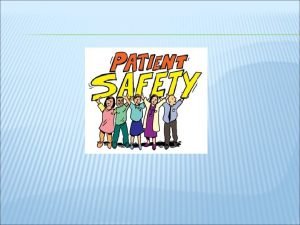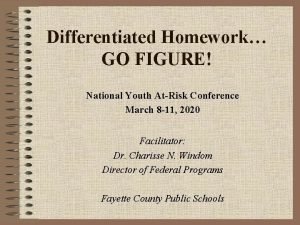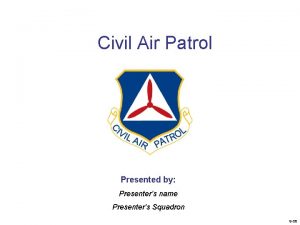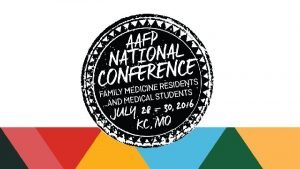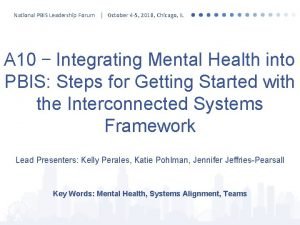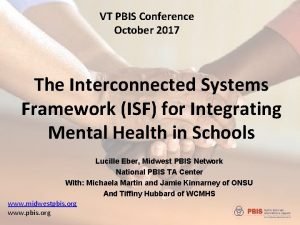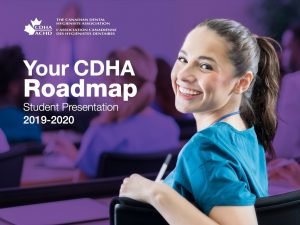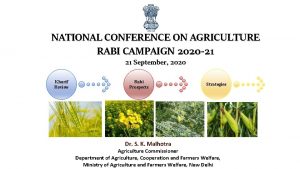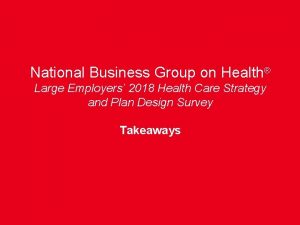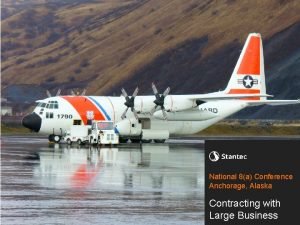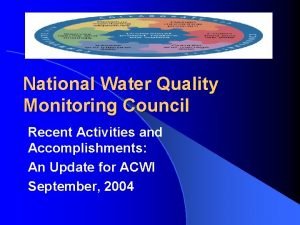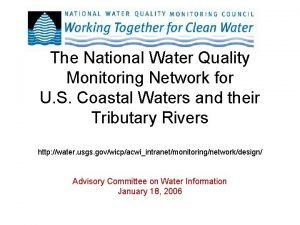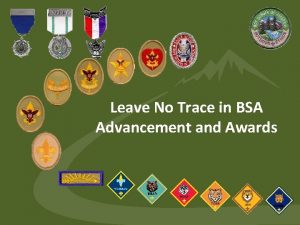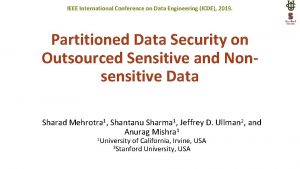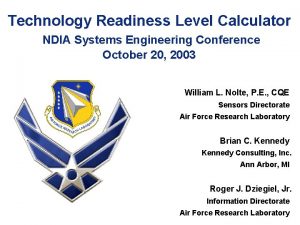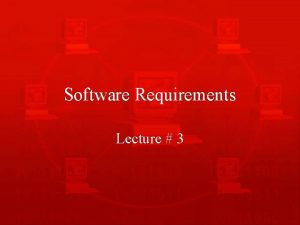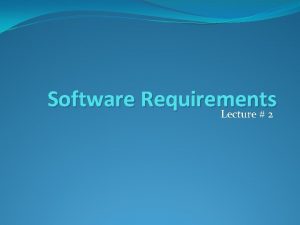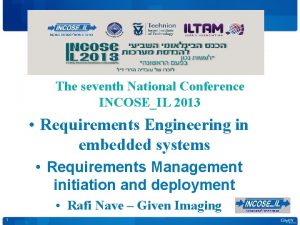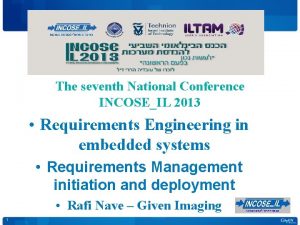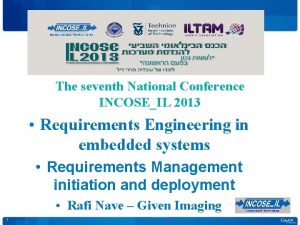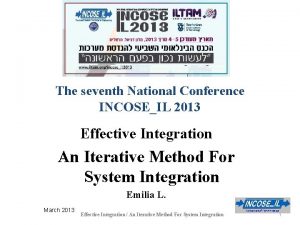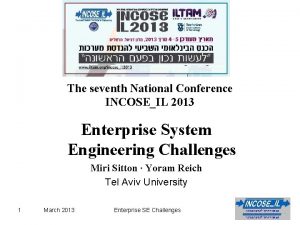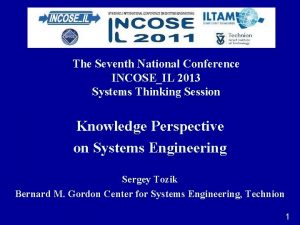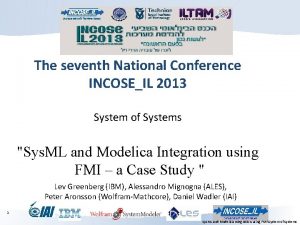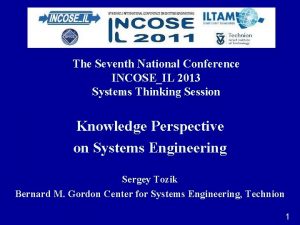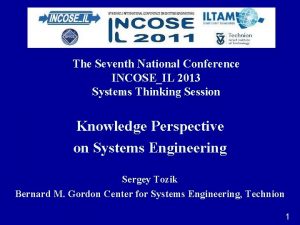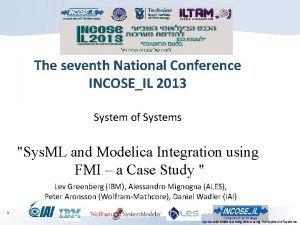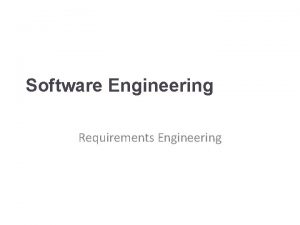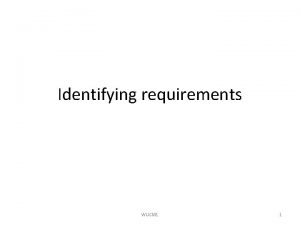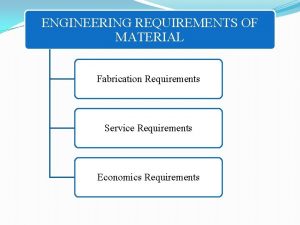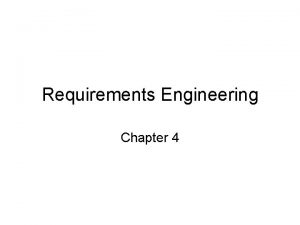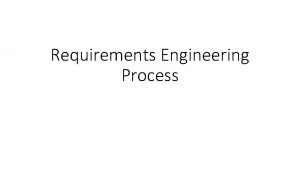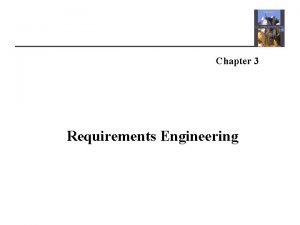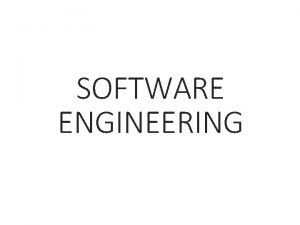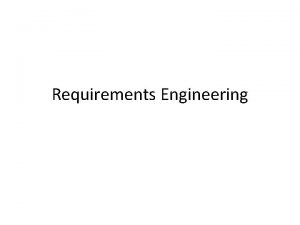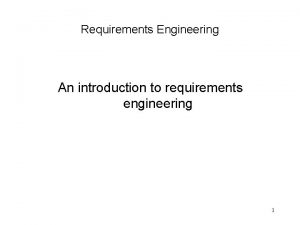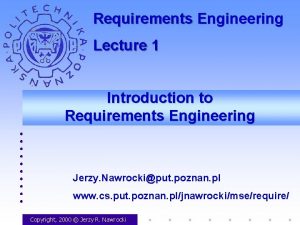The seventh National Conference INCOSEIL 2013 Requirements Engineering

























- Slides: 25

The seventh National Conference INCOSE_IL 2013 • Requirements Engineering in embedded systems • Requirements Management initiation and deployment • Rafi Nave – Given Imaging 1

Requirements Management initiation and deployment Rafi Nave March 2013

Requirements Management initiation & deployment ■Context ■Approach ■Highlights ■The Given RAPID SW example ■User stories ■Adaptation to Agile development methodology ■Conclusions

Context ■ Roughly 12 years ago I drove the introduction of RMS [ Requirements Management System ] at NDS. ■ It is ‘the only way to work’ there nowadays. ■ About 24 months ago – a similar initiative took place at Given Imaging. ■ The first ‘wave’ of products has undergone the learning on how to apply RMS. Time to take inventory! ■Being a Medical company, subject to scrutiny and audits, brings additional importance to having adequate RMS.

Approach ■ We contemplated between 2 approaches: ■ Focusing on a new product development and starting from scratch following RMS. ■ Start with products that are half-way thru, that will serve as means of learning, as well as serve as baseline for future projects. ■ We opted for the 2 nd approach. ■ In retrospect – it brought benefits beyond expectations, both on product quality and on the ability to pass well audits. ■ We used external consultant: Golden Solutions, in the formation of the methodology and process.

Approach ( cont’d ) ■ 2 products were selected: ■ The SW flagship product: RAPID 8 ■ HW product: Bravo Recorder ■ A SW tool: QPACK, by Orcanos, was selected for the ALM [ Application Lifecycle Management ] ■The PRDs [ Product Requirements Docs ] the Specifications and Test plan specification were entered into the system ‘after the fact’ ■Full traceability was accomplished from PRD, through Spec to Test Plan on both products

Highlights ■The ‘exercise’ helped the quality of the products and especially improved their documentation. ■During the external ISO audit – the ability to demonstrate traceability from PRD thru Spec to Test coverage was highlighted by the auditors as an impressive capability ■The team underwent an incremental learning curve on how to use the tool and overcome its limitations, on how to locate mis-matches and correct them and, especially, on how to write better documents.

Highlights ( Cont’d ) ■The methodology was ironed out on the first projects, so that in the second wave most kinks were smoothened. ■The team appreciated the benefits of RMS to the point of needing no persuasion to apply it to the new products. ■We are still on a learning curve and the methodology and process are still being stabilized.

The Given Imaging Development Process 9 6/19/2021

Given Imaging Products ■Given develops, produces and distributes medical systems for the Gastro. Intestinal medical community. The priducts help diagnose pathologies through visualization of the GI tract ■Given products are distributed in more than 75 countries ■We just released our 8 th generation of the visualisation software [ RAPID ] ■This project was developed, for the first time, in an incremental approach (SCRUM) ■We just started a completely new big project

Given Imaging Product Development Workflow • Define features & effort PM MKT Clinical analysis Feasibility & Fine-tuning features Extensive QA & Final fine-tuning SW R&D AlgorithmsHW Clinical analysis PM MKT SQA CS SW R&D V&V= SQA + Clinical analysis (Alpha) PM MKT 3 rd level support & Field questions CS PM MKT

Coverage Flow/ Relations Map 12 6/19/2021

Moving Forward to a New Product ■Using SCRUM methodology “by the book”: ■User stories ■SCRUM ceremonies ■Continuous Integration ■Test Planning and Execution ■Tools (ALM) ■The most significant change was the introduction of user stories into the process.

The User Stories 14 6/19/2021

Why User Stories? ■ User stories ■ Emphasize the user’s goals, not the system’s attributes ■ Can be verified by SQA ■ Can be demo’d to stake-holders ■ Bridge the communication gap between PM, Dev & SQA ■ Support and encourage iterative development ■ Provide means for flexible and efficient planning ■ Each user story satisfies two goals at the same time: ■ It describes the software requirement in detail ■ It also describes a piece of development work for planning purposes ■ User stories bridge the gap between plans and specifications!

How User Stories Are Applied? ■ They are written collaboratively & incrementally by the entire team ■ Initial form may include a single sentence. ■ Details emerge during the sprint by discussions between developers, SQA & PM, and are written inside the User Story as “Conditions of Satisfaction” ■ The detailed user story serves as a first class Software Requirement ■ The list of “Done” user stories forms the software specification As a <role> I want to <goal> so that <benefit> Conditions of Satisfaction 1. … 2. … 3. …

User Story status workflow 17 6/19/2021

Software Design Spec ■Specify system architecture and application design in a software (functional subsystems). ■We are using this object to complete the coverage of the user story by using the RMS. ■Each developer is writing the SDD and is responsible to ‘translate’ requirements into a description of the software structure. 18 6/19/2021

The Agile Development Process 19 6/19/2021

The “Traditional” Process Implementation – R&D Verification - SQA Internal Val. (clinical staff) ‘last feature in’ full testing cycle vs. regression when to start? Clinical Trials when to end?

The Agile Work Flow Implementation + Verification R&D, PM, and SQA Bug fixing + Verification R&D, PM, and SQA ‘last feature in’ full testing cycle vs. regression Internal Val. (clinical staff) Clinical Trials

The Rapid 8 AGILE Scrum example ■ The 8 th generation of our main software product, “RAPID for Pill. Cam®”, was developed, for the first time, using an iterative approach, adopting Scrum methodology ■ 3 -week long sprints were executed, including: ■ Sprint planning ■ Bi-Weekly stand-up meetings ■ Allocating developers task to sprints ■ Task-oriented test execution using exploratory testing method ■ Sprint “retrospective” meetings ■ Releasing sprint SW version to internal clients (marketing), using Citrix Xen. App

Continuous Integration - Daily Process ■Every night, an automated script: ■Builds & deploys the current version of the software on a dedicated server ■Performs the following test sets: ■Unit level tests ■Component level tests ■System level tests ■Emails all relevant parties with the results ■ The daily updated server is used for exploratory testing and verification of user stories during the sprint

Conclusions ■ RMS is important to ensure product integrity and compliance to customers/market requirements. ■ You need to walk before you run! It is preferable to start with ‘path of least resistance’ and acquire team’s interest and collaboration gradually. ■ Over time the process, tool and practices will become ‘second nature’ and will be ingrained in the organic development process. ■ The process and methods must be updated to reflect the SW development process evolution [ In our case: Use stories and Agile/Scrum application ]

Thank you! 25 6/19/2021
 Agile 2013 conference
Agile 2013 conference 2013 hospital national patient safety goals
2013 hospital national patient safety goals National youth at risk conference
National youth at risk conference Civil air patrol national conference
Civil air patrol national conference Aafp national conference
Aafp national conference Pbis national conference
Pbis national conference National conference on agriculture for summer campaign
National conference on agriculture for summer campaign Vt pbis
Vt pbis Cdha membership
Cdha membership National radiological emergency preparedness conference
National radiological emergency preparedness conference National conference for rabi campaign 2020
National conference for rabi campaign 2020 National business group on health conference 2018
National business group on health conference 2018 National 8a conference alaska
National 8a conference alaska National water quality monitoring conference
National water quality monitoring conference Nwqmc conference
Nwqmc conference National water quality monitoring conference
National water quality monitoring conference Leave no trace awareness award
Leave no trace awareness award Nehs induction ceremony
Nehs induction ceremony Ieee international conference on data engineering
Ieee international conference on data engineering International cryogenic engineering conference
International cryogenic engineering conference Technology readiness level calculator excel
Technology readiness level calculator excel Engineering requirements document
Engineering requirements document Domain requirements
Domain requirements Inverse requirements
Inverse requirements High level requirements
High level requirements Requirements discovery techniques in software engineering
Requirements discovery techniques in software engineering

